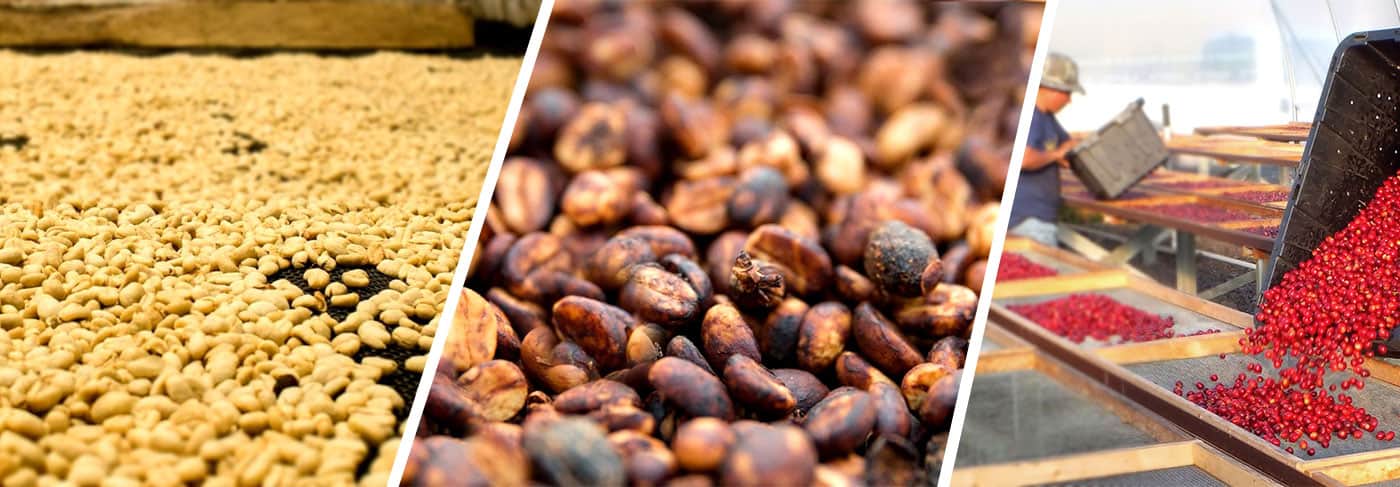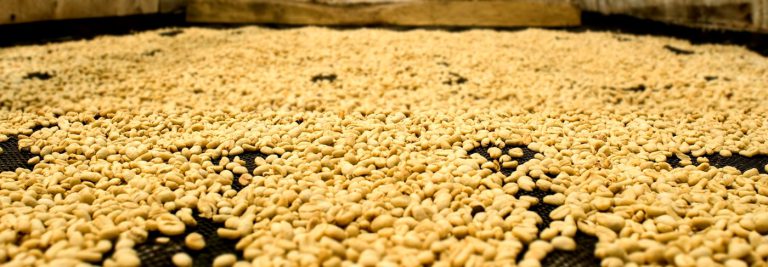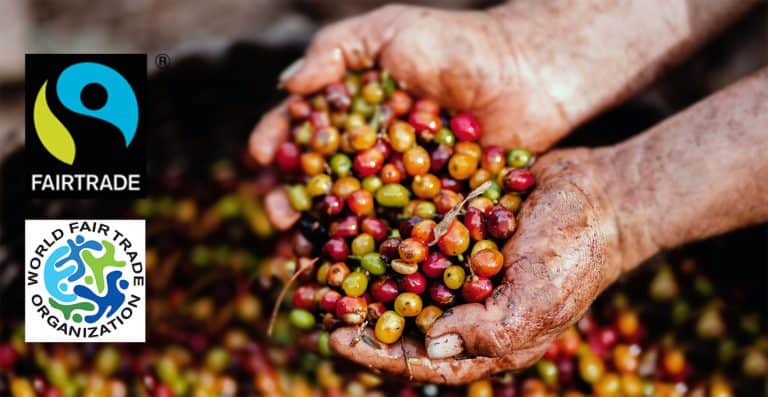Coffee Processing Methods Compared – Natural or Dry, Washed, Honey, & More
Have you ever found yourself shopping for coffee beans and wonder what the natural, washed, and honey processes meant? If you’re not knowledgeable about coffee processing methods, these terms will be confusing.
But no worries, your friendly neighborhood barista to the rescue.
In this article, I’ll discuss the different coffee processing methods, exploring the natural process, washed process, honey process, wet-hulled coffee, and even fermented coffees.
After reading through, you should be able to choose the coffee beans that are right for you.
3 Most Common Coffee Processing Methods
There are different ways how coffee cherries turn into the coffee beans we all know and love. Depending on the origins and processing method, your coffee beans can have different flavor profiles, prices, and environmental impact.
Here are the most common methods for processing coffee:
- Dry process
- Washed process
- Honey process
Can you tell which is which in the image below?
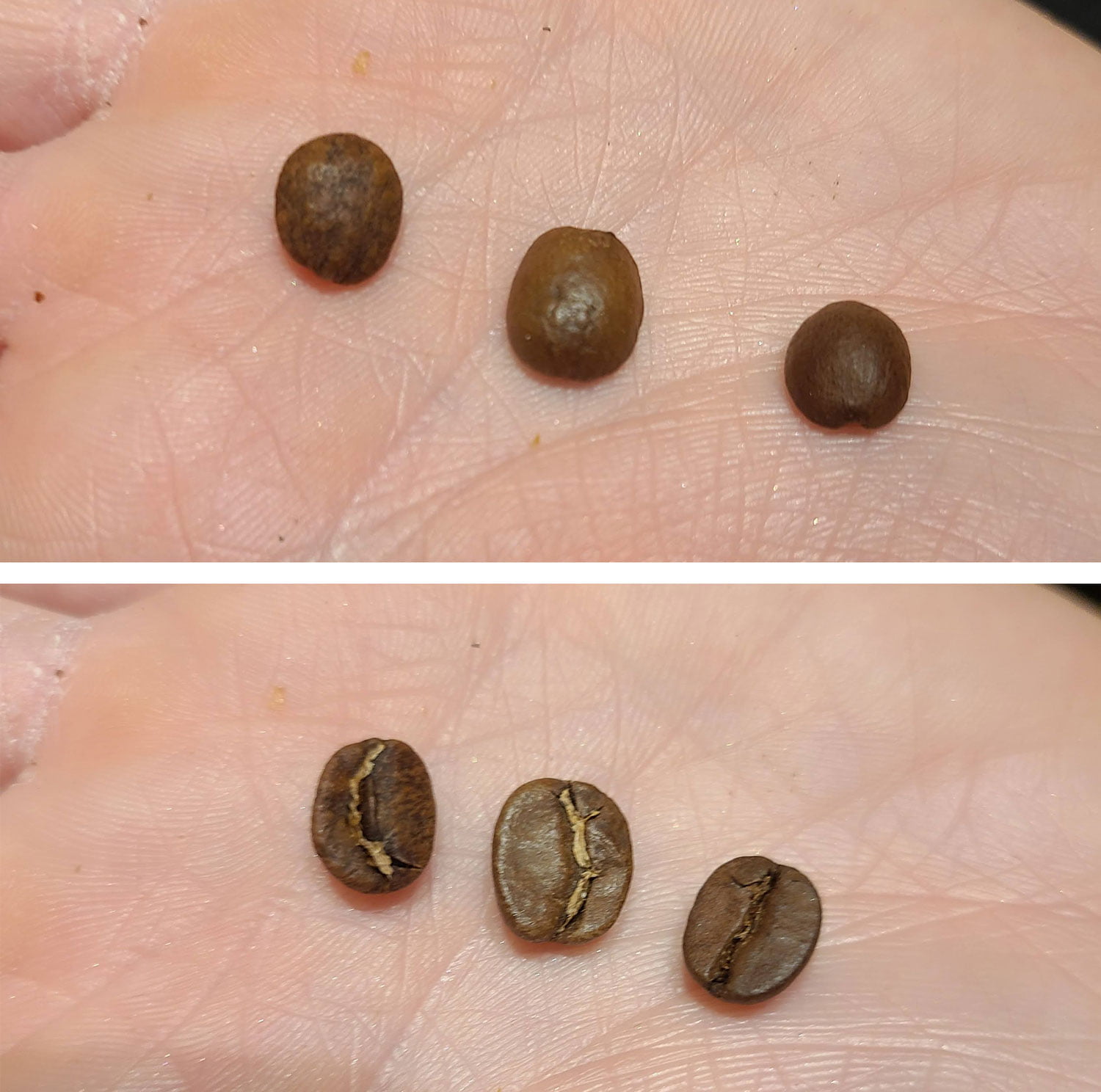
Natural Process (Dry Process) Coffee
One of the most traditional and widely practiced methods is the natural process, also known as the dry process. In this method, freshly picked coffee cherries are spread out in thin layers to dry in the sun for several weeks. The cherries can be dried on brick patios or raised drying tables, allowing better airflow around them to facilitate even drying.
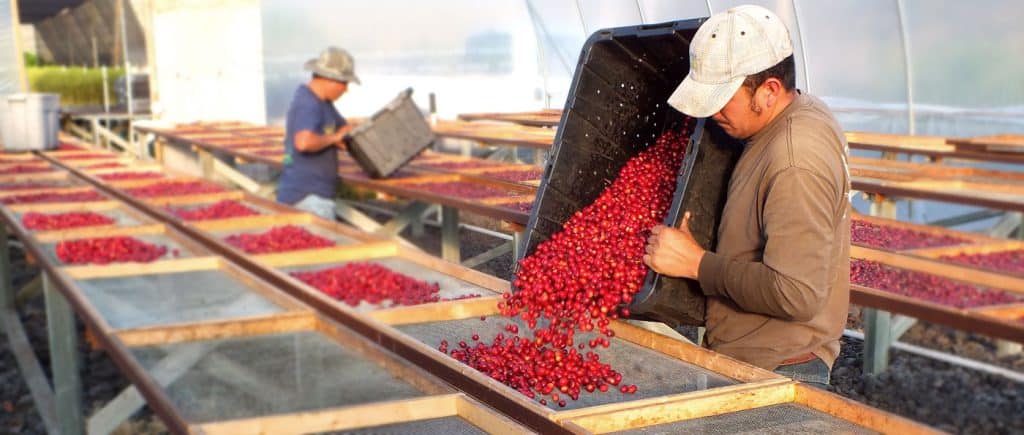
- During this drying period, the sugars and mucilage (the sticky substance that coats the seed) cling onto the seeds, enhancing their sweetness and creating complex flavor profiles.
- Regular turning with a rake also helps prevent fermentation or molding during this critical phase.
- Once completely dried, machines remove the outer husk mechanically so that only raw green coffee beans remain.
This results in coffees that tend to exhibit fruity and bold flavors, such as blueberry or strawberry notes.
Regions known for using natural processing include Ethiopia – which holds historical significance as where it all began – and Brazil, particularly during its dry season, when environmental conditions favor natural processing due to water scarcity concerns.
Washed Coffee (Wet Process)
Now, let’s dive into washed coffee, also known as the wet process. This method involves removing all the flesh from the coffee seeds before drying them. The result is a cleaner and brighter flavor profile in your cup.

- Once harvested, the coffee cherries undergo de-pulping to remove their skin and most of the fruit.
- After this initial step, they are then fermented and exposed to clean water in troughs or tanks to further break down and wash away any remaining flesh on the seeds.
- After rinsing, they’re laid out under sunlight for slow and even drying until achieving an optimal moisture content of around 11%.
Talking about taste, washed coffees generally possess higher acidity levels and increased complexity compared to other processing methods. They have a pronounced brightness to balance out their sweetness alongside flavors unveiled throughout growth seasons like varietal distinctions brought about by unique soil compositions.
A concern surrounding this method though is that it can pose environmental concerns due to the excess usage of water and pollution resulting from post-processing water disposal methods.
Honey Process (Pulped Natural Process) Coffee
Moving forward onto honey processed (or pulped natural process), this method originated in Costa Rica and has gained popularity in Central American countries and the specialty coffee market.
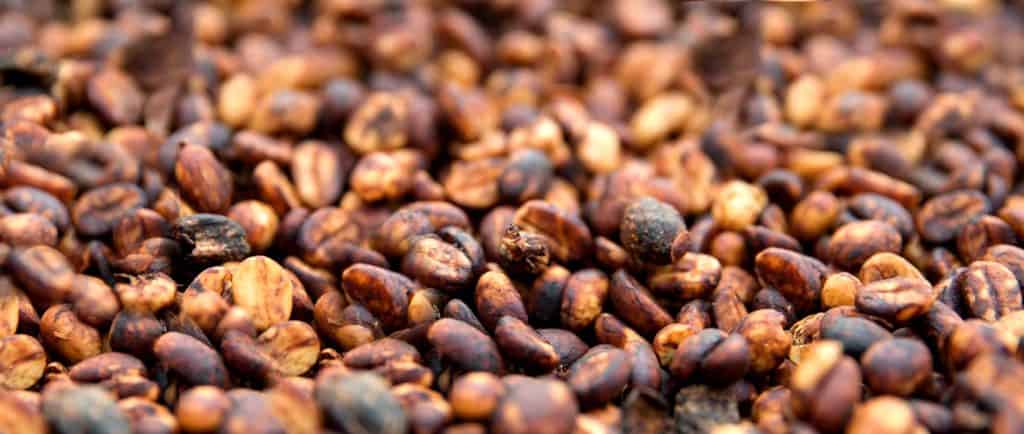
- Honey-processed coffee cherries are also de-pulped, but the machines are programmed to leave a specific amount of flesh on the seeds.
- The resulting cherry-covered beans then undergo drying on elevated tables or beds like their dry-process counterparts.
The resulting coffee beans can be sorted into three different shades or types of “honeys” (not related to bee honey) depending on how much mucilage from the flesh was left during processing:
- White Honey Coffee: Here, 80-100% of the mucilage gets removed.
- Yellow Honey Coffee: 50-75% retains parts containing mucilage.
- Red Honey Coffee: Removal ranges from 25-50%
- Black Honey Coffee: Very little mucilage is removed, going below 25%.
In terms of flavor profile, honey processed coffee beans can exhibit the sweetness and body akin to natural coffee but with a reduced risk of defects.
This method also requires less water compared to wet processing, making it an attractive choice for regions facing water scarcity.
When brewing, knowing the specific attributes of your beans could help you achieve the results that you desire in your brew. While natural and washed coffees both have their own benefits and drawbacks, what I like about the honey process is that it partly utilizes both methods to reduce defects and the carbon footprint of the final product.
Other Types of Coffee Processing
While natural, washed, and honey processing methods are the most common coffee processing techniques, there are also some lesser-known methods that result in unique flavors:
Wet-Hulled Coffee Processing
One of the less widely used methods is the wet-hulled coffee processing or Giling Basah as it’s known in Indonesia where it originates.
- This technique involves removing the skin and a portion of fruit flesh from harvested cherries before drying them.
- The beans are dried to a moisture content of around 30-35% rather than the usual 11%, making them easier to hull by striping off parchment layers on the inner seed.
The process results in coffee beans with a distinct green color with lower acidity and bold flavors like wood, spice, tobacco, and leather. You can really appreciate its uniqueness attributed to factors such as the soil quality and climate of the region where beans come from, the most popular one being Sumatra in Indonesia.
Carbonic Maceration Process
Carbonic maceration is a type of anaerobic fermentation that has gained popularity in recent years. In this method, whole coffee fruits are placed in a closed container, typically made of steel, where carbon dioxide gas is pumped in to displace oxygen. The lack of oxygen encourages the growth of specific microorganisms that ferment the sugars within the fruit.
This process can take several weeks or months.
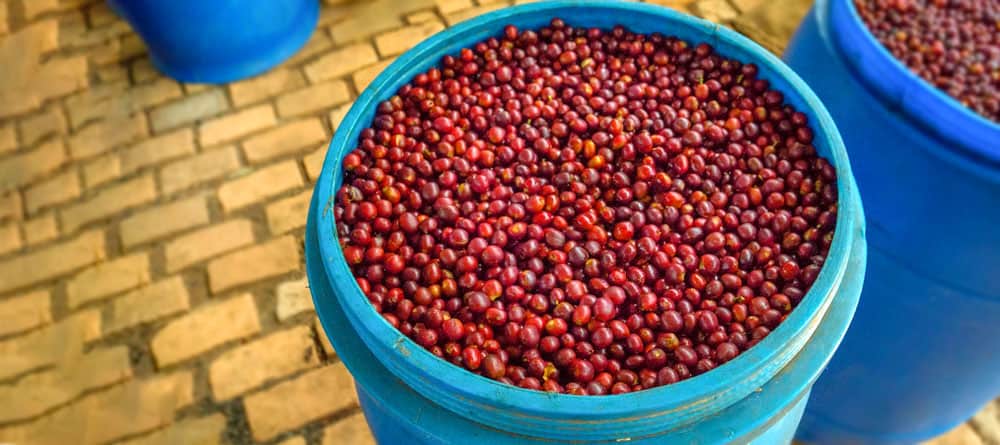
Due to the prolonged fermentation period and controlled conditions, you can expect an intense coffee with fruity and wine-like flavors reminiscent of berries, tropical fruits, or even citrus notes.
Some coffee producers have even experimented with infusing additional flavors during the fermentation process, such as cinnamon, licorice, or bananas, to create unique and distinct flavor profiles.
A drawback with this is that it’s still relatively rare and localized to specific regions or farms. It also requires significant time and investment so don’t be surprised by its more expensive price compared to traditionally processed coffee beans.
So the next time you’re sipping on your favorite cup of coffee, take a moment to think about the journey those beans have been through. From the coffee farmer that raised the coffee trees under the shade or the sun, to the coffee roasters and processors that turn the coffee cherries into the beans that end up stored and brewed in our kitchens.
Comparison of Coffee Processing Methods
Here’s an overview of the beans and brews produced depending on the different ways to process coffee:
| Methods | Process | Coffee |
|---|---|---|
| Natural Process | Coffee cherries are dried whole in the sun. | Fruity, sweet, full-bodied, complex flavors. |
| Washed Process | Coffee cherries are de-pulped, fermented, washed, and dried. | Clean, bright, acidic, balanced flavors. |
| Honey Process | Coffee cherries are partially de-pulped and dried. | Sweet, syrupy, with varying flavor profiles. |
| Wet-Hulled Process | Coffee cherries are partially de-pulped and dried with more moisture content. | Earthy, intense, lower acidity. |
| Carbonic Maceration | Coffee cherries are fermented in a controlled CO2 environment. | Unique, fruity, floral, wine-like flavors. |
When choosing your beans based on how the coffee is processed, consider the flavors and intensity of the resulting cup as well as its environmental effect to decide which coffee is best for you.
Frequently Asked Questions (FAQs)
Here are the answers to questions you might have about the different coffee processing methods:
Producers consider various factors when deciding on a processing method, including climate, access to water resources, equipment availability, market demands, and desired flavor profiles. Some regions may favor certain methods due to tradition or specific environmental conditions.
Natural processed coffees are known for their sweetness. The drying process with the cherry intact allows sugars to develop in the bean, resulting in fruity and syrupy notes that contribute to a naturally sweet cup.
There’s still no clear evidence of how common processing methods exactly affect the caffeine content in its beans, but a scientific study has shown that the emerging trend of coffee processing through fermentation can reduce the caffeine in the final product.
Conclusion
There are a lot of factors that go into your favorite cup of joe – the beans’ roast, brew ratio, your chosen grind size, and the brewing method all chip in on your cup’s flavors. The way the beans are processed is often overlooked by shoppers, but trust me, it has a huge impact on the flavor of your coffee.
I’ve been able to taste-test beans from neighboring farms that used different processing methods, and they were very different.
So from now on, I would recommend you make note of what kind of processing method your beans have been through and think about how it affects the taste as you sip it.

